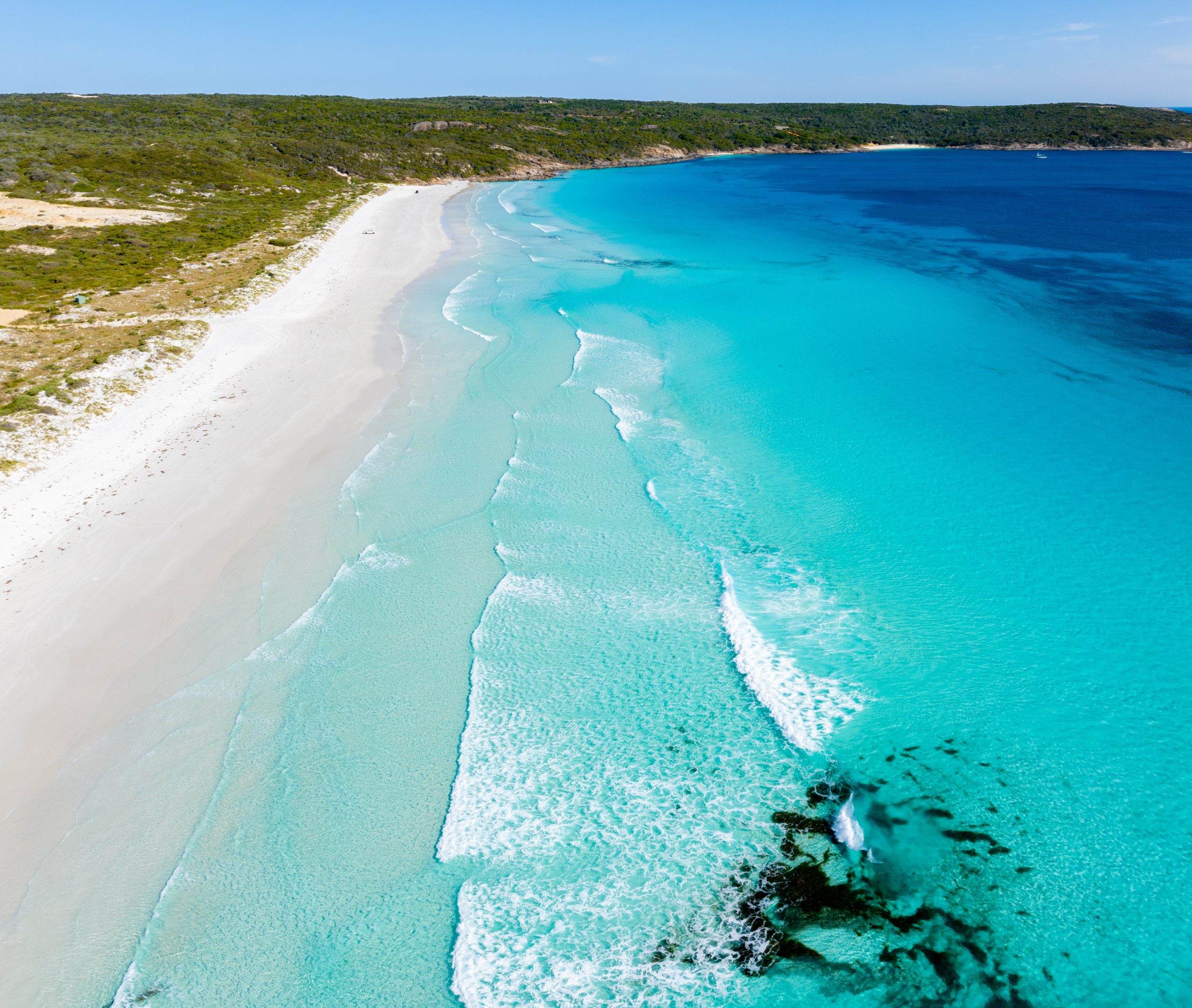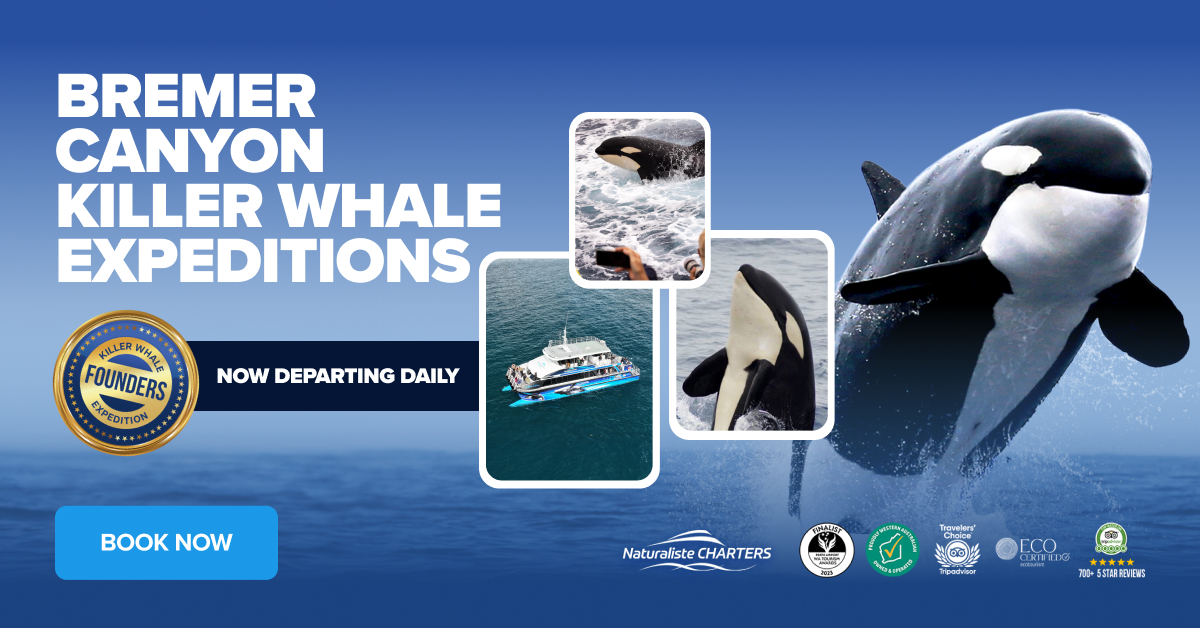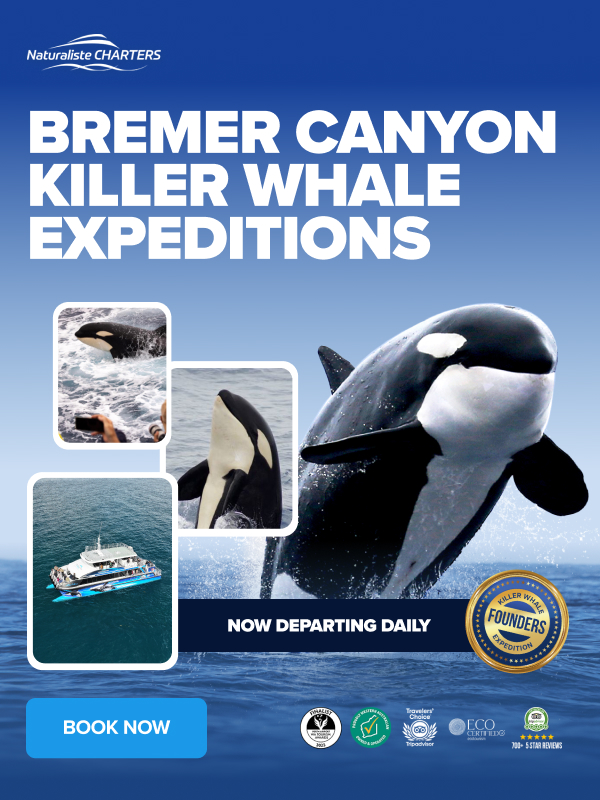Weekly Highlights from Naturaliste Charters
Another week of incredible encounters on the Bremer Canyon! From playful dolphins and curious orca pods to high-speed hunts and unexpected visitors. The Southern Ocean continues to deliver breathtaking moments. Here’s what unfolded over the past week:
A Thrilling Sighting of Calf Wren
3rd February We had an exciting encounter with orca pods. After some careful searching, we spotted Nibbles, a mature male with a distinctive dorsal fin, and Digby from Razor’s group. Both orcas were foraging in the Southern Ocean, diving and surfacing as they hunted. Their grace and expertise in the water were a captivating sight.
Our attention shifted to a smaller pod, where Nibbles had joined Fanscar’s family. This time, we were thrilled to spot the recently discovered calf, Wren. This tiny calf, with an orange tinge due to visible blood vessels under her skin, was learning the basics of orca life. As Wren confidently splashed and rolled in the water, it was clear she was growing more comfortable in her environment.
Later, we found Lucky’s pod, including Koomba, Vincent, and Doppel. As the orcas moved through the water, a thrilling scene unfolded as bluefin tuna leapt from the water in an attempt to escape. This spectacle served as a reminder of the intricate balance of the Southern Ocean’s ecosystem, where orca pods like Lucky’s play a vital role.
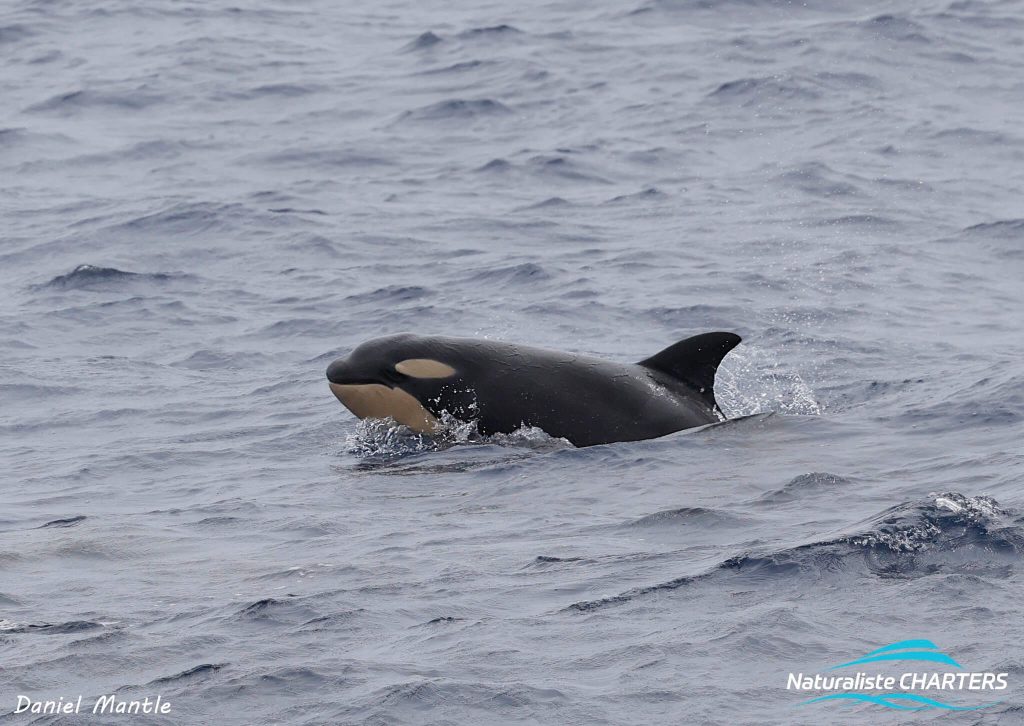
Orca Calf Wren was sighted today in Bremer Canyon
A Mix of Marine Life
4th February The day started with a lively encounter as a pod of 30 bottlenose dolphins cruised up to the back of the boat, close enough to make out the individual markings on their bodies. These dolphins often bear scratches from “tooth raking,” a natural part of their social interactions.
Upon reaching the hotspot, we spotted plenty of bird life, mainly flesh-footed shearwaters, an excellent sign that something was happening below. Sure enough, the first recognisable fin belonged to Nani, confirming we were with Alki’s pod. This family, including little Maui, seemed preoccupied with their own mission, so we ventured off in search of more action.
Along the way, we had rare sightings of a sunfish near the surface and a hammerhead shark cruising just below, its distinctive dorsal fin slicing through the water. We later reunited with another group of orcas—Tatty’s pod, consisting of around 16 individuals, including the massive male Chalky. We spent the afternoon watching this pod’s stunning synchronised surfacing before wrapping up with a visit to the Australian sea lions at Glasse Island.
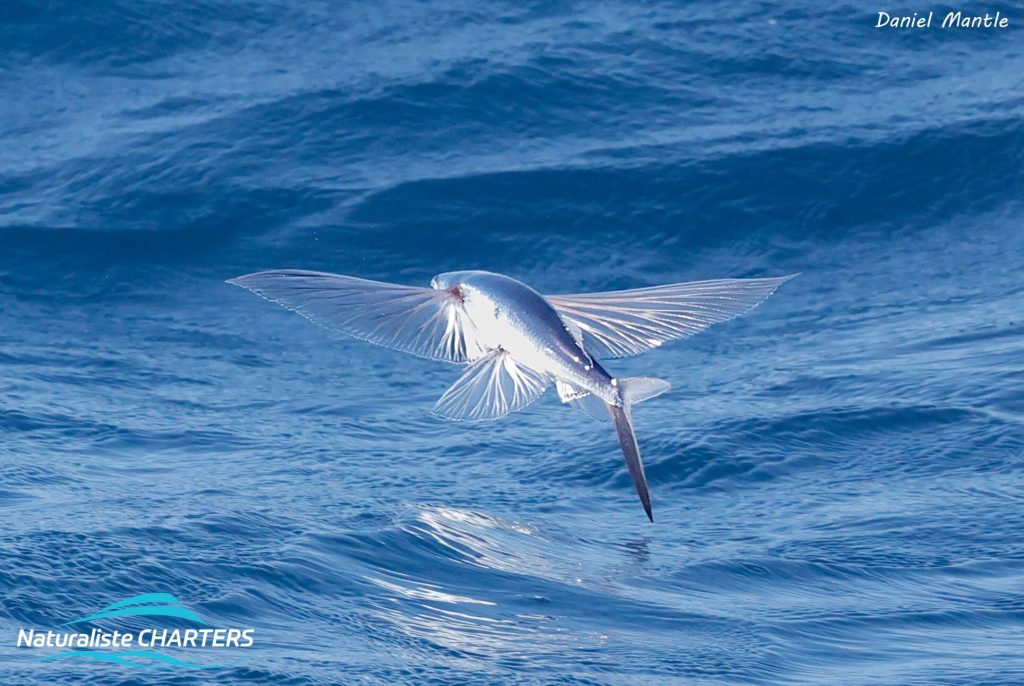
Flying Fish are sometimes seen in Bremer Canyon
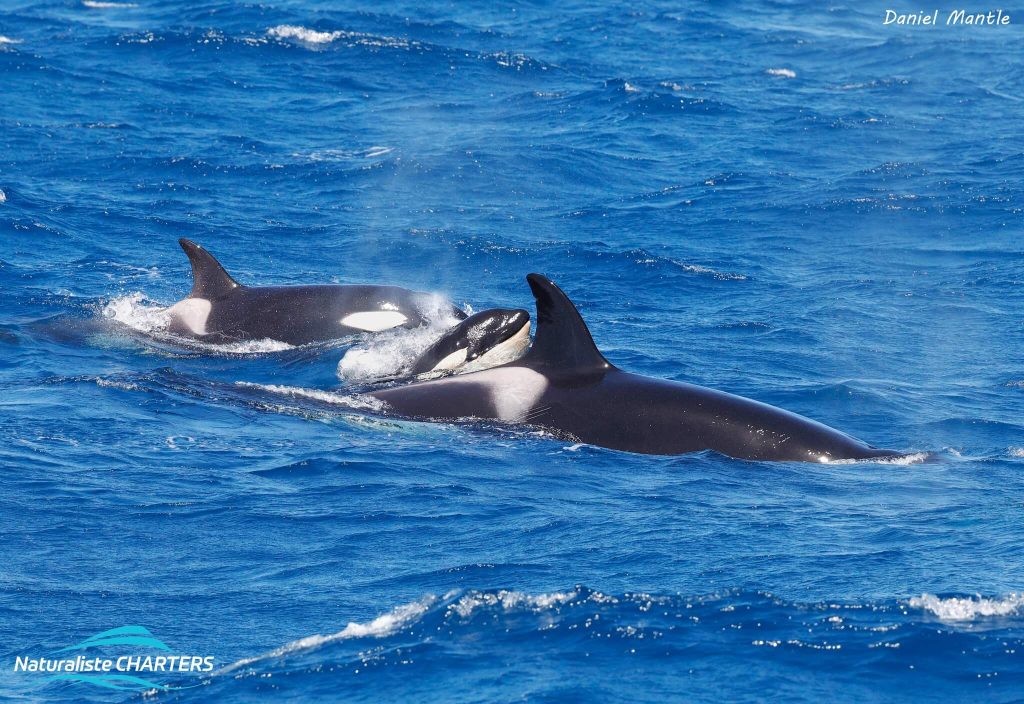
An orca pod and calf
The Thrill of the Hunt
5th February The ocean was alive today, and from the moment we set off, we knew it would be special. Common dolphins greeted us early on, their energy setting the tone for the day.
Our first orca sighting was Nibbles’ pod, where we got another look at the newest calf, Wren. The pod demonstrated alloparental care, with multiple family members—Nibbles, Fanscar, and Dalaxy—all pitching in to help Wren’s mother, Akama.
Later, we encountered the young, playful members of Split Tip’s group. They showed off their curiosity with belly rolls and side glances as they glided just beneath the boat. Then, the pace changed dramatically as the orcas launched into a high-speed chase. A burst of bloody water and a swirling mass of seabirds confirmed a successful hunt. As we watched, the younger orcas took turns practicing tearing into their meal under the guidance of their elders.
The day ended with a peaceful pass by Glasse Island, where Australian sea lions basked in the afternoon sun.
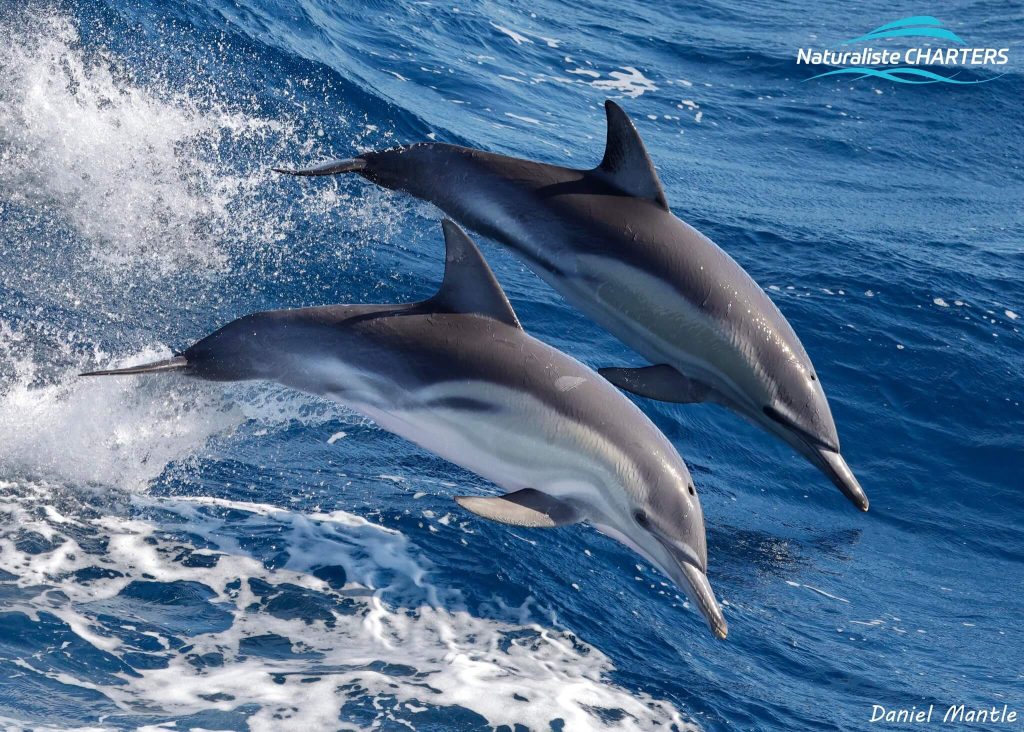
A pod of Common Nose Dolphin ride our wake
A Rare Orca Pod Encounter
6th February The Southern Ocean reminded us of its power today, with choppy conditions making for a bumpy ride out to the canyon. Our first encounter was with a long-nosed fur seal using its flipper for thermoregulation—a clever trick to control body temperature.
Despite a slow start, our persistence paid off. After hours of searching, we finally spotted a swirl of birds and the familiar fin of Lucky, a rarely seen orca. Even more exciting, we counted four massive mature males in this pod, including Koomba, whose towering dorsal fin reached nearly two meters high! The pod was actively feeding, with small oil slicks rising to the surface—likely remnants of fish or squid.
The grand finale came as all 17 orcas surfaced together in perfect formation. It was a breathtaking sight to see them move as one before we made our way back, with a final visit from playful common dolphins bow-riding alongside us.
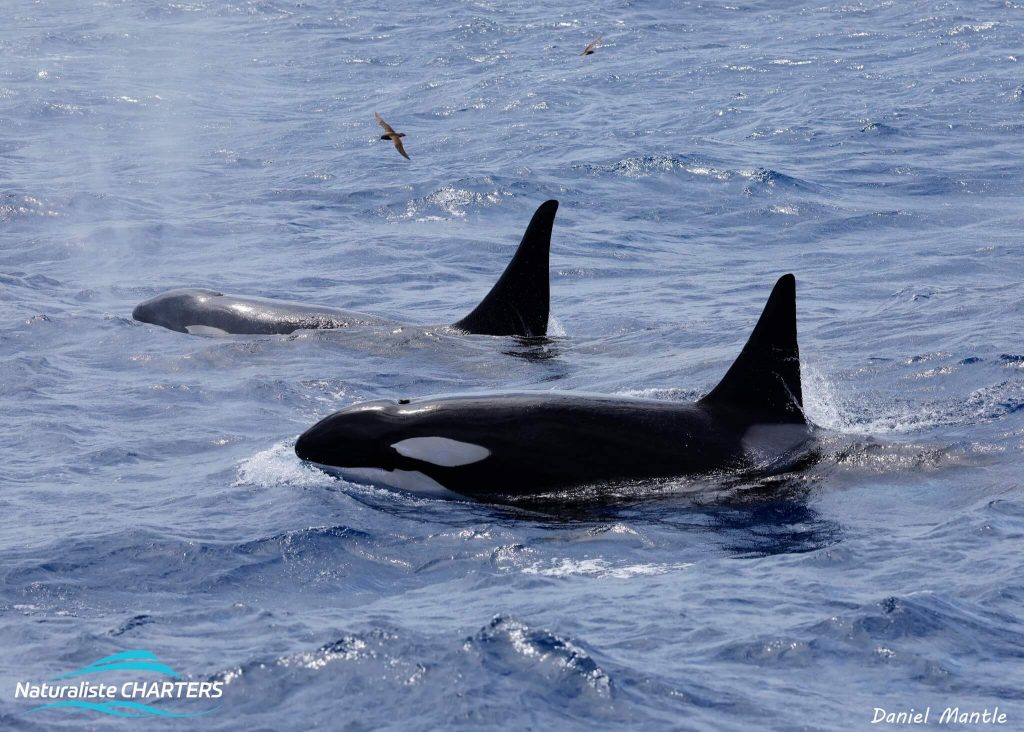
Numerous orca pods greeted us today after searching for some time
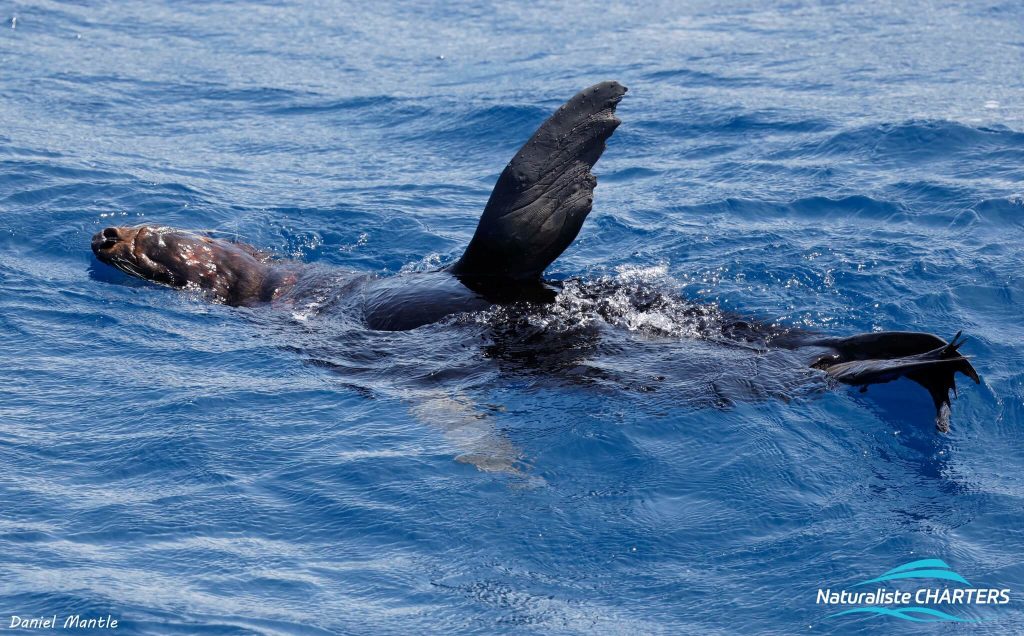
A seal floating on the ocean greeted us
Orca Pod Learning Through Play
7th February Tatty’s pod was the first sighting of the day, with Chalky, Missy, and little Marley making close passes by the boat. The pod was spread out, diving for long stretches as they searched for food.
We later joined Split Tip’s group, where younger orcas were engaged in what looked like play—but was actually an important hunting lesson. They had caught a small sunfish and were tossing it around like a toy. Sunfish, with their slightly toxic skin and lack of defenses, make ideal “training prey” for young orcas learning how to hunt.
Not long after, the orcas resurfaced with a strange object—a plastic plant pot. A stark reminder of the human impact on even the most remote parts of the ocean.
As we headed back, a pod of pilot whales appeared, surfing the swell before we wrapped up the day with another sea lion sighting at Glasse Island.
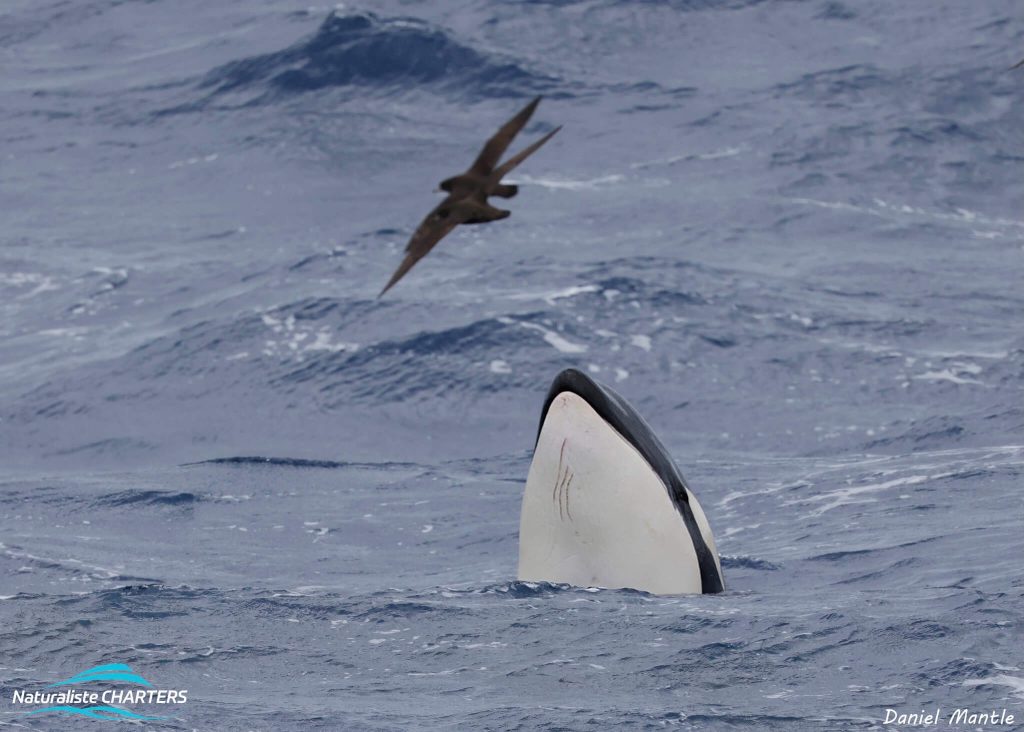
Orca engaging in play or were they learning hunting techniques?
A Megapod of Pilot Whales
10th February With clear skies and low winds, conditions were perfect. And what a day it was! Before we even spotted an orca, deckhand Luke called out a sighting of pilot whales—over 200 of them! Pilot whales travel in large groups, sometimes reaching up to 1,000 strong, known as megapods. We watched in awe as families with calves surrounded us, moving gracefully through the water. Mixed among them were oceanic bottlenose dolphins, another rare and exciting sighting. These intelligent creatures use echolocation to navigate and hunt, making them formidable ocean predators.
Our orca search took longer than usual, but patience paid off when Swirl from Cookie’s group finally appeared. As we tracked her, we saw multiple blows scattered across the horizon, signalling that many orcas were in the area, though they remained focused on foraging. For the perfect finale, Razor’s pod approached us, with the cheeky calf Blade popping up for a spy hop at the bow—seemingly just as curious about us as we were about them. Another epic day on the water in Bremer Bay!
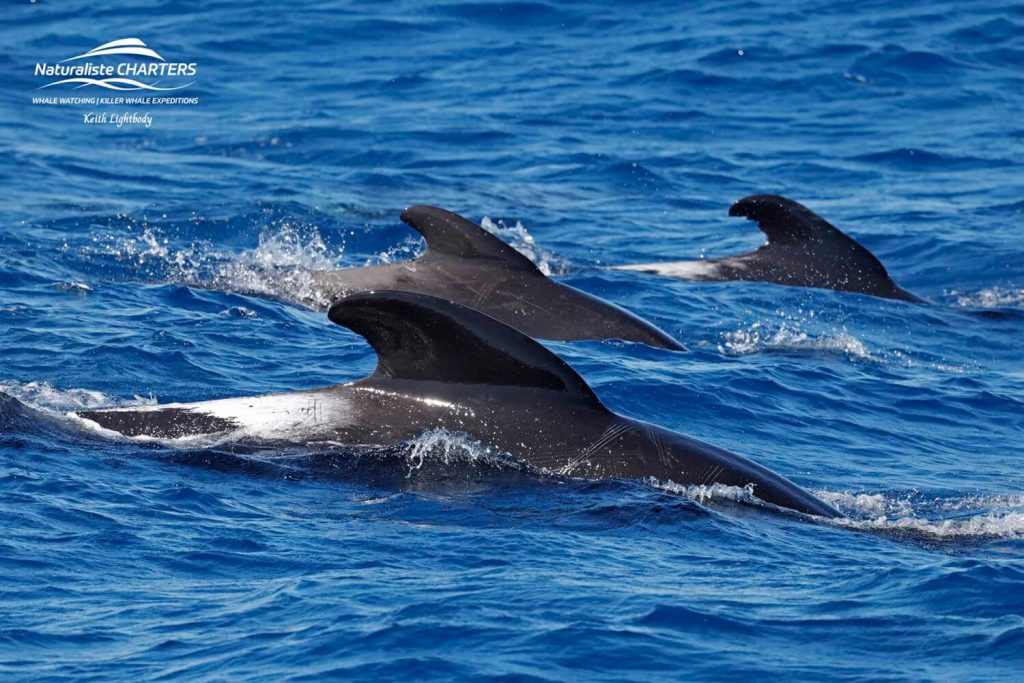
Pods of Pilot Whales reveal large numbers of the whales
Book your tour Today!
Join us this killer whale season in Bremer Bay for an unforgettable adventure! Experience the awe-inspiring orca pods up close on our expert-led expeditions. With stunning scenery, unique wildlife encounters, and a once-in-a-lifetime experience. it’s the perfect way to connect with nature. Book your killer whale tour today!


